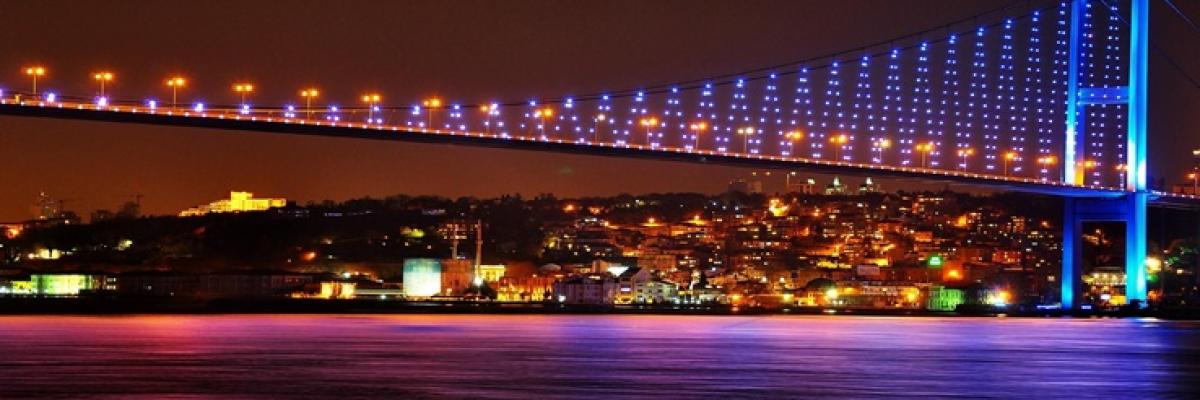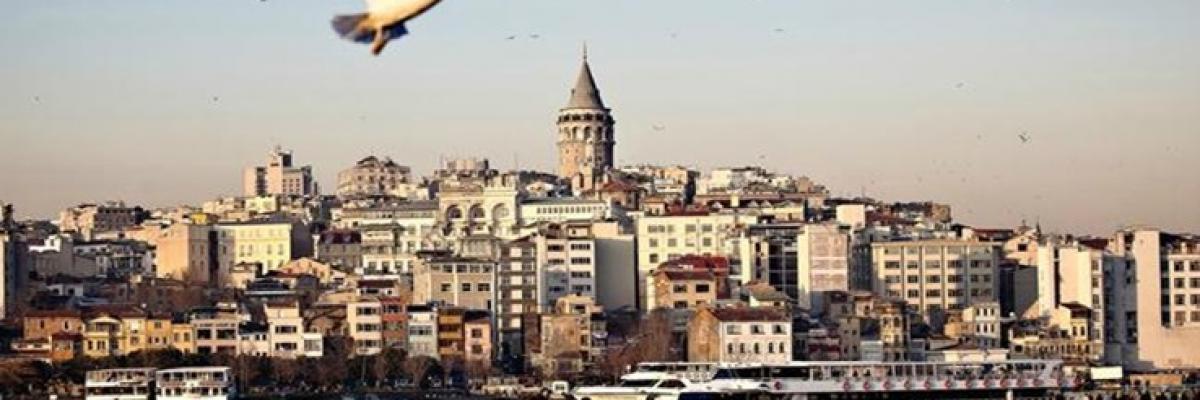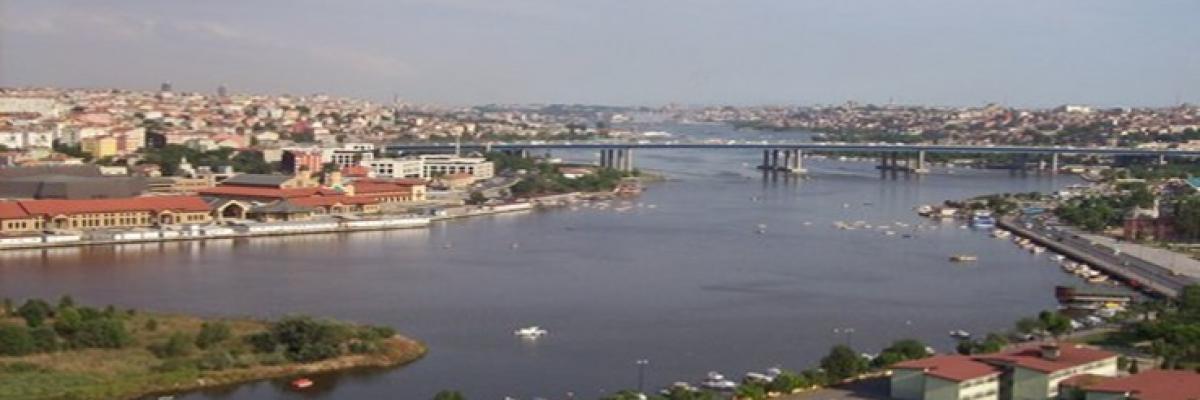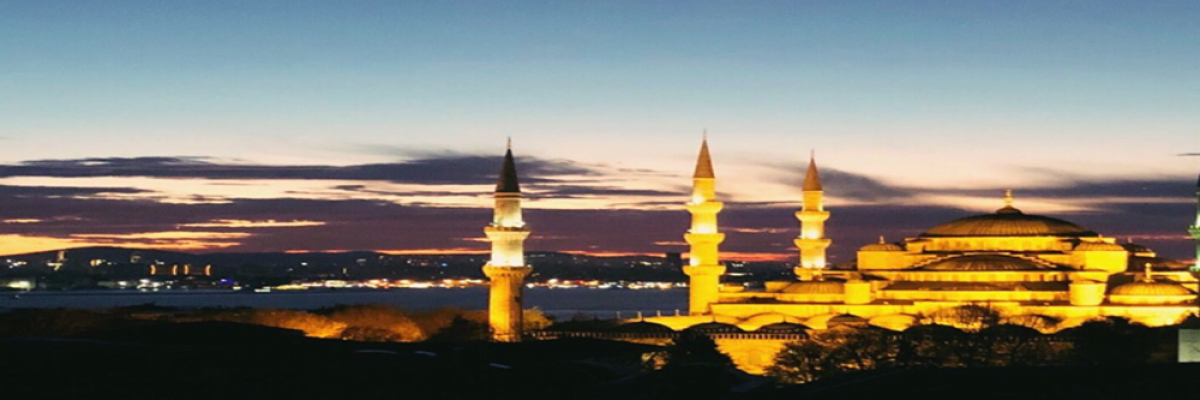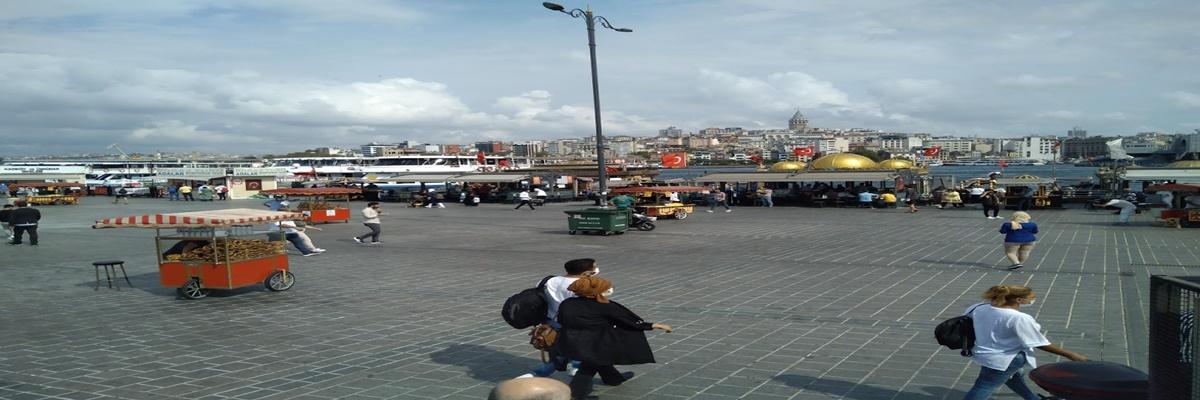Afyonkarahisar
AFYONKARAHİSAR

Our city has archaeological ruins reflecting the culture and art of civilizations of thousands of years, centuries-old structures, caves formed in millions of years, thermal richness and natural beauties, artifacts that have persevered for centuries, fairy chimneys, open-air temples and cuisine. is a region of ours. Our province is a tourism paradise with many historical and natural beauties sought "outside the sea" for local and foreign tourists. Afyonkarahisar, which has various tourism values such as hot springs, rich natural structure, historical artifacts, alternative tourism diversity, culture and belief tourism, festivals, is a crossroads on the western side of Anatolia and a natural gate connecting the east to the west and the north to the south by road and rail. is in position. As an alternative to the sea and sun tourism, winning is very important in recent years in terms of health and thermal tourism in our province, which is part of the tourism "TURKEY'S CAPITAL OF THERMAL" has become.
In the city center, 226 m. The castle, which is a steep, high and conical hill at a height, has attracted the attention of people from the Hittites until today and although it is suitable for defense, it has been made more suitable for defense by being surrounded by three layers of ramparts, which are lower, middle and upper walls.
Because of this feature, the Hittites; HAPANUVA, Romans and Byzantines called AKROINON, Seljuks, Principalities and Ottomans KARAHİSAR-ÎDEVLE, KARAHİSAR-Î SAHİP.
It was named Afyon because of the word Opium, which means the sap obtained from the poppy plant, which was grown as a source of livelihood of people since the second century BC in the city center and within the borders of the city.
Over time, both of them were combined and the name of our city became Afyonkarahisar. It is known that this name was given for the first time in court records in the 17th century.
Since the region is known for its Phrygian culture, it was named FRIGYA SALUTARIS (Healing Phrygia) due to the Phrygian hot waters, especially in the Roman and Byzantine periods.
Afyonkarahisar Before History:
There are settlements, which have been denser since 3000 BC. The most important of these is Kusura Höyük. This period, when the mine was first worked and Bronze was used, is the "Bronze Age". Along with the mine, for usage and need; utensils, cutters, strikers, perforators, spinning and weaving tools made of stone, clay, bone, bronze; items related to life and death were found. These periods are well known with the excavations in Kusura, Kaklık and Karaoğlan.

Afyonkarahisar in History:
Hittites (1800-1200 BC):
After 1800 B.C., the Hittite Kingdom, including Afyonkarahisar, was established in Anatolia. This first period of the Hittite State is under the influence of an Indo-European culture. However, the religious and cultural characteristics of Hatti did not disappear. The old Hittite cube cemetery was unearthed with the excavations carried out in Yanarlar, Seyildi town of this period. Hittites, BC. Around 1380, they organized a campaign on Arzava, took these principalities under their control and opened the longest trade route of that period (Boğazköy-Apassa [Ephesus]) to Hittite trade. This road, which later became known as the "King's Road", reaches the Aegean via Hisarköy, Bolvadin and Dinar.
From the 2000s BC. In this period, which goes up to 8 B.C. years, there are Assyrian Trade Colony Age, Old Hittite, Hittite Empire and Late Hittite periods in Anatolia. The existence of these periods has been determined in our city. Colonial Age seals and cemeteries; Old Hittite cemeteries, axes, pots and pans, hammer seal from the Imperial period, bronze figurine, hieroglyphic stele and castle walls; An embossed stele from the Late Hittite period is among the important finds.
Phrygians (1200-546 BC):
The Phrygians, who started to spread to Anatolia since 1200 BC, From the 9th century onwards, they established political dominance between the Kızılırmak curve and Sakarya rivers and made Gordion a political center and Pesinus a religious center. B.C. The Phrygian domination, which was destroyed by the attack of the Cimmerians from the northeast in 660, was re-established around Yazılıkaya (City of Midas) and İhsaniye, a rocky and forested region between Afyonkarahisar and Eskişehir provinces; It has spread to Altıntaş and Dinar, even to Elmalı (Antalya) according to the results of the excavations made in recent years. Although the Phrygian sovereignty disappeared with the Persian period, it is known that the Phrygian religion, culture and language adopted in the region continued to exist within the borders of our city, as the Phrygian region, even during the Byzantine period. Especially in the borders of İhsaniye, the monuments carved into the rock with lots of lion or rug patterns such as Aslankaya, Kapıkayalar, Göynüş Valley, Aslantaş, Yılantaş, Maltaş and Kumcaboğaz have survived until today. These rock monuments, which are not found elsewhere, are only within the borders of our province.
Lydians (660-546 BC):
The Lydians, who took the ancient city of Sart in the province of Manisa as their center, started in BC. It started to be seen since the seventh century and the political domination of Lydia, after the Cimmerians overthrew the Phrygian rule in 660 BC, spread to the provinces of Dinar, Dazkırı and Burdur. With the domination of the Persians in Anatolia in 546 BC, the Lydian period was also erased from history. Traces of this period can be seen in the southern part of our city.
Persians (546-333 BC):
The state called "Akamenid" and "Pers" in Iran was founded in BC as a result of the Cimmerians' raids to Anatolia collapsing the Phrygian rule. It started to enter Anatolia from the beginning of the 6th century and made Geleneia (Dinar) the state center of Anatolia. Since 546, they have completely ruled and even extended the borders of the empire to Macedonia. When they were defeated in the war with Alexander the Great in 334 B.C., they lost all the borders of the empire to Hellenic rule. Traces of this period can be seen in the wood paints of the Tatarlı tumulus and Altıntaş tombstone.
Hellenistic Period (333-30 BC):
In 336 BC, Macedonian King Flip took the first step to realize the idea of "a united Greek nation conquering Asia", which was put forward by Herodotus and developed by Socrates when he crossed into Anatolia with his army. His successor son Alexander (Alexandros) first went south. During the war in Isos ııı. (334 BC) .He defeated the Persian army under Darius. He wore the crown of the Persian ruler. He reached India via the Khyber crossing. He wanted to unite the east and the west. He started a new era of civilization (HELENISM) by ending the years of Persian rule.
Alexander the Great died in Babylon in 323 B.C.Their commanders fought each other to share the countries they had conquered. The fight against the commanders who owned Egypt, Babylon, Macedonia and the Anatolian judge commander Antigonos was held in Ipsos-Julia (Çay District) (301 BC). Selevkos, the ruler of Babylon, was one of the commanders who won against Antigonos. He marched on Western Anatolia in 282. During the rule of Thrace and Macedonia, although they did not leave a trace of the new civilization understanding, our city established 16 independent city-states within the borders of our province that can print coins (money) in their own name. The most important of them are; These are cities known as Apemeia (Dinar), Synnada (Şuhut), Docimeon (İscehisar), Amorium (Hisarköy) and Pentapolis (Five cities-Sandıklı region). The most brilliant times of the Seleucids were King II. It is the time of Antiochos (233-183 BC). Because the Romans, who established a mighty state in the west, started to intervene in Asian affairs in this period. The Romans, who saw the presence of a powerful ruler in Asia Minor harmful and dangerous in terms of their Mediterranean politics and future ambitions, In 191, they forced the Seleucids to war in Magnesia (Manisa). With the victories they won, they made the only strong state of Anatolia ineffective. According to the agreement made between the Romans and the Seleucids in Apameia three years later, the Romans acquired the lands that extend to the south of the Taurus Mountains. In 120 BC, the Roman Senate deemed it necessary to establish an Asian province in Anatolia with its decision, and the whole of Western Anatolia was attached to the Roman Empire.The Roman commander Luculluse, who ended the Spartacus rebellion in 48 BC, conquered Anatolia to Armenia. Thus, Anatolia came under Roman rule.
Roman Period (30 BC-395 AD)
During the Roman rule, the number of cities increased, especially during the period of peace in the 2nd and 3rd centuries, our city became the center of marble industry and the marbles extracted from Dokimeion (İscehisar) in all Roman lands were processed under the name of Synnada Marble, semi-worked. or marble traded as raw blocks. For this reason, all cities have become marble cities. Roads and structures have always been made of marble. We can clearly see them in the archaeological sites we call ancient cities. In addition, all features of marble art are exhibited in the Archeology Museum of our city.
Within the borders of our city; Apart from Apemia, Synnada, Dokimeion, Amorion, Eucarpia (Emirhisar), Hieropolis (Koçhisar), Stectorium (Menteş), Bruzes (Karasandıklı), Otreus (Yanıkören) in the Pentapolis region; In addition, 16 cities named Metrepolis (Tatarlı), Prymnessos (Pheasant), Kidyessos (Küçükhöyük), Lysias (Arızlı), Julio (Tea), Ococleia (Karacaören), Sanaus (Sarıkavak) were established. Apart from these, it is known that small towns such as Akroinon (Karahisar), Sibidunda (Atlıhisar), Diocleia (Ahırhisar) were also established.
Byzantine Period (395-1176):
The Greek colonial city of Emperor Constantinius made Byzantion the capital city (330), later named Constantionopolis (Istanbul) and named Nova Roma '(New Rome), the city became the capital of the new political union that ruled Anatolia. After the death of the Roman Emperor Teodosios (395), the empire split into two, the Phrygian region fell to the share of his eldest son Arkdios. Amorium became an important city during the time of the Byzantines, who continued their domination in the east after the disappearance of Western Rome. Carved churches and monasteries spread over a wide area in Abassam (Bayat district) Docimeum (İscehisar) and Ayazin, architectural remains belonging to religious buildings M.S. It dates from the 6th century to the 10th century. Accordingly, the Byzantines chose these places as religious centers in this period.
The 9th and 10th century is the period when Turks flocked to Anatolia. When Romanos Diogenes, the Cappadocian commander, became the Byzantine Emperor, he gathered all his strength for the war with the Seljuks in the east, was defeated by the Seljuk Sultan Alparslan and captured (1071). After the Battle of Malazgirt, the Byzantine Army, which was regrouped, fought with the Seljuks in Bolvadin (1116), Konya (1146) and later in Miryekefalon (1176) and finally defeated and left this region to the Turks.

Turkish Sovereignty in Afyonkarahisar:
Seljuk and Principalities Period:
As the Byzantines did not recognize the treaty made after the Malazgirt Victory, the Great Turkish Sultan Alparslan requested the conquest of Anatolia from Kutalmışoğlu Süleyman Shah to the Aegean and Marmara. Suleyman Shah as the "Commander-in-Chief" entered Anatolia at the head of the Turkish army and completed the conquest of Anatolia in a few years with the raiders under the command of his great commanders such as "Artuk, Tutuk, Saltuk, Mengücek, Ebulkasım and Atsız Bey".
The years 1071-1243 is the period when Anatolian Seljuk Turks were strong as a political union. With the death of Sultan Sancar in 1157, the Great Seljuks ended, the great crown of khanate passed to the West, to the Anatolian Seljuks. In 1243, after the defeat in Kösedağ during the war with the Mongols, it lost its feature of being the most powerful state in the world, came under Mongol rule, and was divided into principalities subordinate to the Ilkhanids.
Until then, the city called "Karahisar" was called "Karahisar-ı Sahib" in reference to him. Afyonkarahisar remained the capital of this principality for a long time. (1265-1333) His grandson, Şemsettin Ahmet Bey, who replaced Sahibata, was Germiyanoğlu's son-in-law. After his death, his sons Nusrettin Ahmet and Muzafferüddin Devlet Bey, Ahmet Bey, went to the Germiyan Palace, to which he was attached by his mother. While it was dominant all around Afyonkarahisar, the sons of Devlet Bey ruled in the city during the time of the declining principality (1260-1428). Germiyan Bey, Yakup II, was a sincere Ottoman friend. He lived in Ipsala from 1390 to 1399 in the Ottoman country. His principality by way of will II. Murat, thus under the rule of the OTTOMANS in Afyonkarahisar, which is within the Germiyan principality. (1428).

Afyonkarahisar in the Ottoman Administration:
Afyonkarahisar passed to the Ottomans in 1390 during the Beyazıt period. After the Battle of Ankara (1402), the Germiyanoğulları regained their former lands, but upon the death of the last German ruler, Yakup Bey, in 1429, these lands were again taken under Ottoman rule. Towards the middle of the 15th century, when the Ottomans were dealing with the Crusaders in Rumelia, the Karamanoğulları, who took advantage of the situation, raided to Kütahya, Karahisari Sahip and the Hamid sides and destroyed these places. Afyonkarahisar region, which was highly affected by such struggles between Karamanoğulları and Ottomans, With Mehmet's elimination of Karamanoğulları, it definitely came under Ottoman rule. The city, which was captured by the Egyptian Governor İbrahim Pasha, who was in a struggle with Mahmud II for a while in 1833, became a sanjak of the Anatolian Beylerbey during the Ottoman rule for more than five hundred years. Afyonkarahisar remained under Bursa until 1917 and became an independent governor towards the end of the First World War.
Afyonkarahisar's Place in the War of Independence:
Our city, where our War of Independence took place, which had our name written in golden letters to the whole world, is a place that people want to capture in every period due to its geographical location. For this reason, Afyonkarahisar has an important and distinguished place in the War of Independence.
Afyonkarahisar is an extremely important region in terms of the War of Independence. The reasons for this can be summarized as follows: Since it was the last stop of the Greeks, the future National Struggle would begin on these lands. In addition, Afyonkarahisar has ensured the unification of congresses held in the East with the congresses held in the West by organizing the Afyonkarahisar Congress, one of the cornerstones of the civil resistance in the Aegean Region, and possible frictions between the two regions were prevented with this meeting. This congress all defense-i law, denial-i annexation and national forces to the operation has been taken under the supervision of the Grand National Assembly of Turkey. In addition, our city has played an extremely important role in the transportation of weapons, ammunition and supplies since it is the focal point of Afyonkarahisar-Eskişehir, Afyonkarahisar-Kütahya, Afyonkarahisar-Uşak railways, and the transportation need of our army was mostly met by these railways. In addition, since Afyonkarahisar, Izmir-Afyonkarahisar railway line and Istanbul-Baghdad railway line converge in Afyonkarahisar, Afyonkarahisar has taken the great burden of inter-regional transportation.
The Greeks were encouraged by the British to occupy Anatolia and received great support from them. That's why the Greeks occupied the Aegean Region, and therefore Afyonkarahisar, which is its last castle and stop. Afyonkarahisar has been occupied twice by the Greeks. The first occupation did not last long, but the second occupation lasted approximately 14 months. Afyonkarahisar is an extremely strategically important region for the Greeks. The reason for this is that Afyonkarahisar is located in an area where roads meet. The starting point of the Afyonkarahisar-Izmir railway line is Afyonkarahisar. A Greek Army with this railway line has the opportunity to meet food and supply safely and quickly. Also, in a possible withdrawal operation, this railway is the guarantee of their lives. In addition, it is close to Ankara, the heart of the War of Independence, and neighboring it. This aspect of Afyonkarahisar emerged especially during the Battle of Sakarya, and showed its importance when the enemy came to Polatlı via Emirdağ (Aziziye) road. In addition, Afyonkarahisar is the key point of a possible Anatolian operation. Since the Greeks were passionate about erasing Turkishness from Anatolia and seeing Afyonkarahisar, the starting point of a military operation in Anatolia, the settlement of their armies at the front was arranged accordingly. Less force was left on the wide front extending from Afyonkarahisar to the north and towards Eskişehir and reaching 300 kilometers. The Afyonkarahisar Region was considered by the Greeks as an extremely important region in terms of both their security and possible operations, and their fate was determined in these lands.
The first occupation by the Greeks was on March 28, 1921. After the first occupation that lasted for 10 days, they evacuated the city on April 7. The second Greek invasion, which started on 13 July 1921, will continue until the Great Offensive.
The Greek forces settled in the lands of our province were expelled from our country, first in Sakarya, and then before they could get rid of this defeat and even had the opportunity to get stronger between Kocatepe and Dumlupınar on 26-30 August 1922 with our "Great Offensive Operation".
On August 26, 1922, at 05.30, our army flew out from Kocatepe, which was illuminated by cannon fire, and attacked Greek positions reinforced with rows of wire fences, machine guns and cannon nests, attacked with great superhuman power, with scissors, butt, even with their hands, the wire they smashed with their bodies. He wrote the epic of the War of Independence by crossing the knits and capturing the positions one by one. Under the leadership of our Commander-in-Chief, with the great efforts and support of all the people of our nation, this offensive operation continued until we did not leave a single enemy soldier in our country and ended in Izmir.
Mustafa Kemal Pasha, in the summary of the speech he gave at Afyonkarahisar Turkish Hearth and the first celebration of the Commander-in-Chief War on 21 October 1925, in Çataltepe near Dumlupınar on 30 August 1924 at 03:30
"Afyonkarahisar Has Been The Lock To The Last Great Victory, Became Its Basis, Afyonkarahisar Has An Unforgettable Bright Page In Our Historical War." “The Afyonkarahisar-Dumlupınar Pitched Battles is a Great Artifact that once again determines the High Power and Heroism of the Turkish Army, Turkish Officers and Command Committee. This work is the immortal monument of the idea of freedom and independence of the Turkish Nation. " he said.
Gazi Mustafa Kemal came to Afyonkarahisar on 23 March 1923, which was cleared from the enemy on 27 August 1922, during the 5-day "Commander-in-Chief War", which started on August 26 and ended on August 30, and was welcomed with a show of affection by the people of Afyonkarahisar.
On the 3rd anniversary of the Dumlupınar Victory, Gazi Mustafa Kemal replied to the telegram of the Afyonkarahisar youth:
“I would like to thank you for the sincere feelings you remembered me and showed about me while celebrating Dumlupınar's 3rd Anniversary. I am confident that the people of Karahisar, who I believe have fully understood all the necessities of the century, will march in the forefront of our social revolution as well as in our military victory. In this respect, I do not hesitate for a moment in the fulfillment and specification of my duties, and I am pleased to offer that I will use the strength and authority that the nation has donated with trust and love. Greetings and love to you all. "

Places to visit
Phrygian Valley
8. Century B.C. In half (750 BC), the Phrygians became a powerful state during the period of their legendary king Midas II. Like the Hittites, the Phrygians, who formed a unique culture in the region where the Anatolian and Afyonkarahisar-Eskişehir-Kütahya provinces converge, in this region in the form of cult tombs and grave monuments, with the temple facades of the Mother Goddess Cybele cult, again with lion reliefs of the Mother Goddess Cybele cult. They ensured the creation of the most interesting and valuable works of the world.
Especially the unique Phrygian Rock Monuments such as Aslantaş, Yılantaş, Maltaş, Kapıkaya I and Kapıkaya II located in Göynüş Valley located in the north of Afyonkarahisar and Döğer Region are the main ones. Phrygians BC. Although they lost their political superiority since the end of the 6th century, Phrygian culture, religion and mythology continued for hundreds of years in Afyonkarahisar and its surroundings, and the Phrygian language was spoken in the region for a thousand years.
CASTLES
Bayramaliler Castle: It is located in the north east of Bayramaliler Village in the district of İhsaniye. It is on the right of the road leading to Sarıcaova Village. It is a settlement called Leonto Kefal during the Byzantine period. It is an important military fort located on the plain of a natural hill and surrounded by walls. There are foundations of many buildings in the castle, and rock settlements on the slopes of the hill with connections with the castle.
Avdalaz Castle: It is located between İhsaniye district, Ayazini town and Yeşilyayla District. It is a multi-storey and chambered building carved into tuff rock. It is known that this rock mass, which has a large cistern in the upper entrance and burial chambers in the lower part, was used as a fortress for defense purposes.
Asar Castle: It is a naturally raised rock mass on the foothills of Köroğlu Mountain, about 4 km west of Bayat district, and is surrounded by a city wall. There are vaulted cisterns, foundations of religious and administrative buildings in the city wall. During the Byzantine period, it became an important settlement called Kedrea. It is a security city that protected and defended the east-west road, which is also used as today's Ankara-Afyonkarahisar road, during the Byzantine period.
Rock settlements were formed as a result of the use of rock masses as settlements by natural factors or by humans. Ayazini Site, Kuzin Rock Settlement, İnpazarcık Archeological Site, Sulu In Rock, Ornaş Rocks, Selimiye Rocks, Tomsu Rock Settlement and rocks in Seydis within the borders of Phrygian Valley were used as settlements. Generally, there are narrow and low passages between the rooms.
There are fairy chimneys and similar natural formations in the Phrygian Valley near Seydis, Karakaya, Döğer, Çatağıl and Sarıcaova settlements, as in the Cappadocia region. These formations were formed by the erosion or carving of the tuffaceous soil texture by natural factors such as wind and rain. Besides the fairy chimneys, the lakes, plateaus and forests in the valley are integrated with fairy chimneys and create natural wonders.
The surrounding province of the less industrialized Afyon, Turkey's 'thermal Capital', known as the as well as marble and Afyon how famous he asked when our mind is the first to come 'creamy sweet pastry, Afyon delight and sausage' as a famous place with flavor.
Afyonkarahisar Archeology Museum
Afyonkarahisar Archeology Museum, which is a reflection of the cultural history of the city, was established in 1931 as a Museum Officer in Taş Madrasa and was transformed into the Museum Directorate in 1933. The current museum building was opened in 1971.
The museum building is single-storey and consists of 9 exhibition halls. These halls have a very rich collection of artifacts from the Chalcolithic (Stone-Mineral), Bronze, Hittite, Phrygian, Lydian, Roman and Byzantine periods, which are displayed in chronological order. Tools and equipment such as terracotta, stone marble, bone, glass, metal pots, statues and coins belonging to these periods give us very important information about the local people's life, belief, production, trade from 3000 BC to today. In addition, marble sculptures, sarcophagi, tombstones and architectural pieces that provide information about the marble trade and art, which have become an industry due to its importance today, increase the importance of the museum. In the garden of the museum, Roman and Byzantine grave steles, sarcophagi, cubes, sculptures, gravestones belonging to the Seljuks, Principalities and Ottoman periods are usually exhibited.

Victory Museum (Commander-in-Chief Historical National Park Directorate)
It was built in 1913-1914. There are 10 rooms, 1 meeting room and stage on the ground floor, 9 rooms and exhibition hall on the upper floor. It is the place where the Commander-in-Chief Field Battle was planned and the attack order was given. In the Victory Museum, the Commander-in-Chief Mustafa Kemal Pasha, Western Front Commander İsmet İnönü Pasha, Chief of General Staff Fevzi Çakmak Pasha and Western Front Operations Branch Director Tevfik Bıyıkoğlu, in memory of the Commander-in-Chief War, were organized in the rooms where they stayed. The Victory Museum can be visited during working hours on weekdays.
Bolvadin Municipal Museum
It is a mixed museum belonging to the municipality where both archaeological and ethnographic works are exhibited, located in the Bolvadin district of Afyonkarahisar. Archaeological artifacts collected in the garden of Bolvadin High School and the Alkoloid Factory were brought to the museum and formed the basis of the museum collection. In the museum, finds belonging to the Early Bronze Age, Ancient Rome, Byzantine, Seljuk, Ottoman and Republic periods and ethnographic materials reflecting local traditions and customs are exhibited.
Ayazini Ruins
Family and single-person rock tombs belonging to the Roman and Byzantine periods, churches and rock settlements belonging to the Byzantine Period are carved works because the land is suitable for such settlement. There are masterpieces of art such as lion burial chambers, columned tomb rooms and a church carved into the rock with exterior and interior architecture. In addition, there is the Avdalaz Castle, where the rock mass was carved and turned into a settlement and contains a cistern. Tourism festivals are held every year in the town.
Amorium Ancient City
Amorium (Hisar) is located 170 kilometers southwest of Ankara, 70 kilometers northeast of Afyonkarahisar and 12 kilometers east of Emirdağ District and has been built by Hittite, Phrygian, Greek, Roman, Byzantine, Seljuk and Ottoman Empire since 2000 BC. It is an ancient city that has been inhabited continuously during its times. The city is evaluated under two headings as Upper City and Lower City. Although there are no archaeological remains belonging to the Classical and Hellenistic periods, Amorium played an important role in the history of Central Anatolia at that time.
